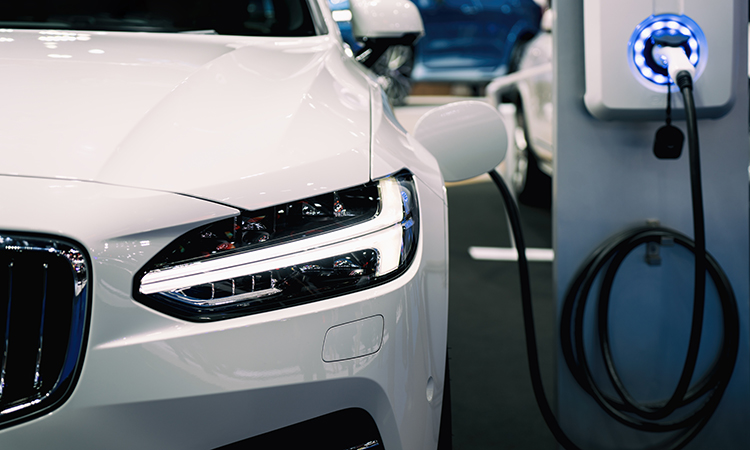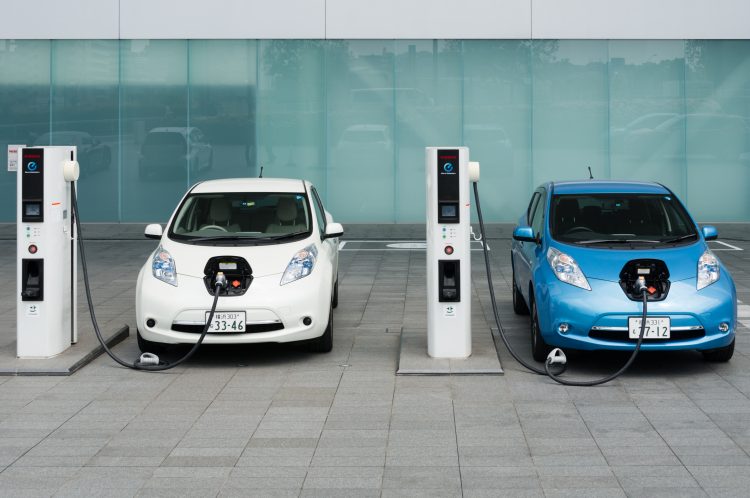Assessing brand progress in the race for EV dominance
- Like
- Digg
- Del
- Tumblr
- VKontakte
- Buffer
- Love This
- Odnoklassniki
- Meneame
- Blogger
- Amazon
- Yahoo Mail
- Gmail
- AOL
- Newsvine
- HackerNews
- Evernote
- MySpace
- Mail.ru
- Viadeo
- Line
- Comments
- Yummly
- SMS
- Viber
- Telegram
- Subscribe
- Skype
- Facebook Messenger
- Kakao
- LiveJournal
- Yammer
- Edgar
- Fintel
- Mix
- Instapaper
- Copy Link
Posted: 19 May 2021 | Daniel Ramos - Osborne Clarke | No comments yet
Daniel Ramos looks at the progress being made by household names as they look to expand into the EV market and beyond.


Over the last five years electric vehicles (EVs) have flourished across the globe. The ‘Global EV Outlook 2020’, an annual publication by the International Energy Agency that reviews global developments in the electric mobility sector, found that the sales of EVs surpassed 2.1 million globally in 2019, accounting for 2.6 per cent of global car sales and around one per cent of global car stock in the same year.
The rapid increase in the popularity of EVs has, perhaps unsurprisingly, led to a convergence of traditional and non-traditional technologies in the mobility sector, as the technology being used in EVs has expanded and developed, in particular in the fields of telecommunications, artificial intelligence (AI) and computing.
Traditional vehicle manufacturers have for many years used computing through the now common place deployment of satellite navigation systems, cruise control, automated parking, on-board entertainment and so on. However, the movement from conventional vehicles to EVs has further pushed the importance of computing in vehicles, alongside the inclusion of many technologies not historically associated with transport, such as connectivity and the internet of things.
As the technology used in the manufacture and use of EVs becomes broader and more sophisticated, manufacturers will need to pay ever closer attention to how their vehicles compare with those of their competitors, and ensure they are staying ahead of the technology curve by considering the impact of non-traditional industries and technologies on their product.
The power of brands
Automotive manufacturers will also look even more to their brands in order to inform consumers about their products and help them stand out in a crowded market.
Brands have always been a powerful tool to influence purchasing decisions, with many traditional car brands such as Ferrari and Porsche being among the most well-known and valuable brands in existence. Although technical specifications such as engine size, horsepower and reliability are often important considerations when choosing which car to buy, the reputation inherent in a car brand can carry with it an allure that is hard for consumers to ignore. Car brands are household names and communicate to consumers expectations as to prestige, quality, performance and reliability.
The shift towards EVs is unlikely to lead to a change in car branding for the most part. For many non-car enthusiasts, branding is likely to be one of the main influences on their decision to purchase one car over another, electric or otherwise.
As can be seen from the electric vehicles on the market, they are often referred to by reference to the manufacturer’s house name, eg Nissan, in combination with a model name, eg Leaf, to identify it as being an electric model. It will come as no surprise that EV manufacturers, a large proportion of whom were and continue to be traditional vehicle producers, have sought to retain the brand value, trust and reputation built up in their house brand over many years, and apply it to their electric range as a way of educating their customers as to what to expect from these products.
In fact, branding may prove to be even more important to purchasing decisions surrounding electric vehicles since they include technology that consumers are less likely to be familiar with, leaving them with fewer ways to differentiate competing products.


The Nissan Leaf is already a household name when it comes to electric vehicles
Registered trademarks in the automotive sector
It is therefore of paramount importance that EV manufacturers and those intending to enter this market look to trademark rights to protect their brands. Registered trademarks are powerful, potentially indefinite (so long as they are used, maintained and not cancelled) rights which enable a proprietor to monopolise the use of its trade marks (or a trade mark confusingly similar) not only in relation to identical activities, but also in relation to similar activities in circumstances where there is a likelihood of confusion or association between the competing brands.
This affords a registered trademark owner the ability to ring fence its brand and, importantly, creates a layer of protection around the brand that extends further than the core activities for which the trademarks might be registered. Importantly however, with a very few exceptions, most trademarks will be limited to a relatively narrow range of activities.
Whilst long-time players in the automotive sector are likely to have extensive registered trademark portfolios protecting their core trademarks in connection with their key activities, the convergence of technologies brought by the emergence of EVs may lead to these trademark portfolios falling out of date and not reflecting their owners’ current or planned activities.
Many of the larger vehicle manufacturers are taking steps to update and future-proof their trademark rights, with for example General Motors (the owner of, among other famous brands, Chevrolet and Cadillac) applying to register its new logo in the UK as a trademark in connection with a wide range of non-traditional activities, including telecommunications services and an array of software goods specifically relating to EVs. Similarly, Nissan registered its house logo in 2016 in relation to a broad array of goods and services including software relating to the charging of electric vehicles as well as electricity distribution services. More recently, Nissan also registered a further logo in connection solely with a variety of computer software-related goods.
The need to review existing brand protection
The increasing use of other technologies in the transport sector is likely to also bring new players to this market. These may include businesses that previously would not have been considered to fall within the automotive sector, for example, telecommunications and software companies.
These companies will also need to audit and expand their trademark protection, since they will need to account for changes in their activities and the way they make and provide their products and services to the automotive sector. Further, given the energy needs of EVs, there will likely be considerably more collaboration between the automotive and energy sectors in the future. This may in turn lead to automotive businesses entering the energy space and potentially also providing their own energy solutions, either in collaboration with energy suppliers or as first-party providers.
An important practical implication for both new and existing automotive businesses as they expand is that there will almost inevitably be increased scope for disputes to arise. For example, whilst a car manufacturer may previously have been able to register a trademark for the manufacture of vehicles despite the existence of an earlier similar trademark registered in a different sector, this may no longer be possible if the automotive industry expands to effectively include these activities.
Again, the same will apply in reverse as a technology business that may previously not have viewed the vehicle industry as a commercial threat may now change its stance and seek to enforce their trademark rights against conventional and/or EV manufacturers if they stray too close to the technology brand, eg by developing and distributing software as a service for use with EVs.
It follows that there will be much more scope for threats to the use and/or registration of trade marks in the automotive industry to come from unexpected and non-traditional places. This underlines the importance for any player to ensure it carries out a comprehensive freedom to operate search to identify potentially conflicting third-party rights before it adopts a new brand or mark. It also highlights the need for businesses active in the automotive sector to take stock of their existing trademark protection to ensure that it covers their activities adequately.
Looking to the future
As EVs become increasingly widespread and attractive, we will continue to see even more interplay between adjacent technologies both in and outside the automotive sector. New technologies will continue to be developed to draw on the benefits of electric and automated vehicles, such as Mobility-as-a-Service (MaaS) initiatives. As vehicles continue to move away from their traditional position in society, brand owners in this space, whether or not with an eye on participating in these areas, should ensure their trademark portfolios are assessed and future-proofed to mitigate against third parties taking advantage of their brands.
Biography
Daniel Ramos is a Chartered Trade Mark Attorney in the London disputes and risk team at international law firm Osborne Clarke.
Related topics
Air Quality, Alternative Power, Business Models, Sustainable Urban Transport
Related modes
electric car
Related organisations
Cadillac, Chevrolet, International Energy Agency (IEA), Nissan







